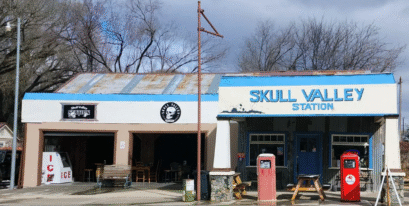
Left to right, beginning behind the Section House, along fence:
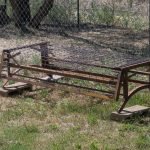
1. Folding metal bed (can be made into a couch or a bed).
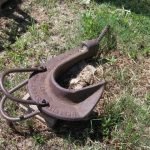
2. Tree stump puller
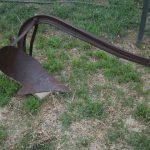
3. Moldboard Plow designed to move dirt to either side of a central furrow. Type of: plough, plow. a farm tool having one or more heavy blades to break the soil and cut a furrow prior to sowing.
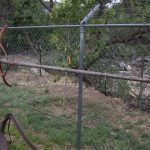
4 Horse-drawn buggy tongue
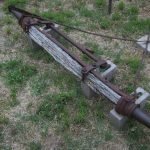
5. Wagon axle
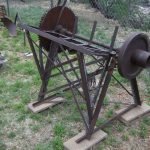
6. Pulley-driven firewood saw table (buzz saw) - the log-holding table is moveable.
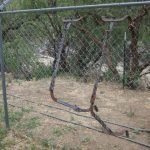
7. Ladder jacks, which were used with wooden rung ladders (hanging on fence). A simple device consisting of a platform resting on brackets attached to a ladder.
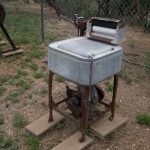
8. Maytag gasoline-powered washing machine.
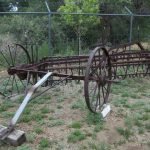
9. CASSE side-delivery hay rake.
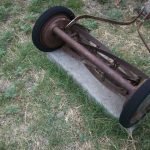
10. Reel type lawn mower, American brand, early 1900s (handle is missing)
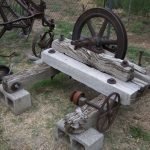
11. Gantry pulley from US Navy mine, Copper Basin mining district.
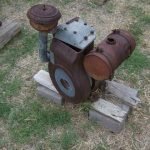
12. Three-quarter horsepower gasoline engine, Sears and Roebuck, 1936 - (in front)
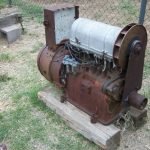
13. Light generator, Delco Light Company, Dayton, Ohio.
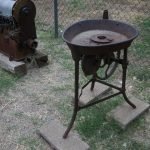
14. Portable forge, early 1900s (in rear)
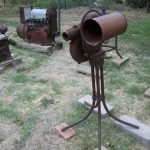
15. Blower for forge, Buffalo Forge Co. (front)
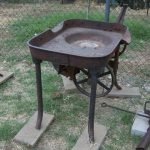
16. Forge made by Western Forge Co. - patented June 19, 1883 (in rear)
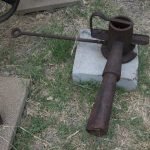
17. Portion of the firebox of a Tuyere blacksmith forge; also called a "clinker buster"
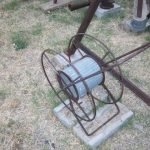
18. Small hose reel, operated by hand (in front)
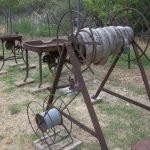
19. Fire hose reel (in rear)

20.-24. Various homemade ore buckets from the early 1900s
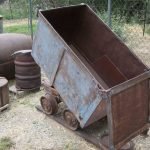
25. Ore car from the earling 1900s, mounted on a narrow gauge rail. It has a tilt bed and swivel table underneath, with a dump door on the end.
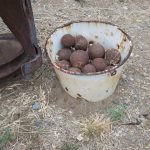
26. Ore crushing balls (in pail)
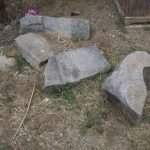
27. Pieces of an arrastra, a stone ore grinder.
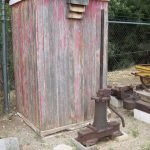
28. Railroad Track Switch Built by Racor, it has a square metal actuating rod extending above the curved handle that can be locked in 4 slots to place rails in a position for routing a train.
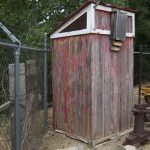
29. Railroad depot outhouse. Used from 1896 to 1967 for the depot in Skull Valley.
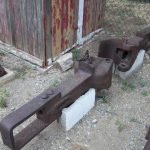
30. Between-car railroad connection couplers.
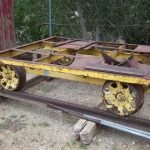
31. Railroad section crew flatcar, #2289 stamped on top of channel iron frame.

32. Railroad engineer's wrenches, circa 1920s (resting on #31 flatcar)
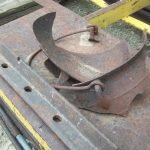
33. Metal boiler pot with leg (in pieces), resting on #31 flatcar.
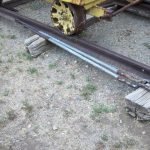
34. Mechanical linkage from telegrapher's office to the semaphore signal tower at depot, used to signal passing trains. (2 metal pipe devices with adjustable end linkages, on ground).
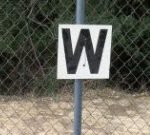
35. Rail-side sign to remind engineers to sound train whistle before approaching track crossings.

36. Two and one-half sets of railroad wheels and axles.
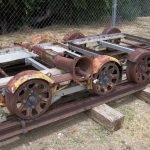
37. Railroad section crew flatcar.
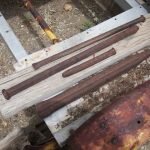
38. Drill bits and metal stakes (on #37)
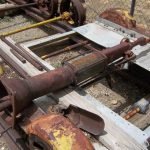
39. Hand-operated fuel pump used to refuel school bus by the Skull Valley School.
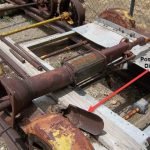
40. Post-hole digger - wooden handles are missing - (resting on #37)
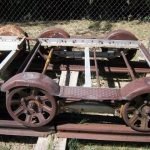
41. Railroad section crew flatcar.
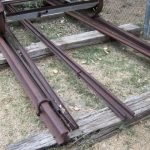
42. Railroad and mining cart rails.
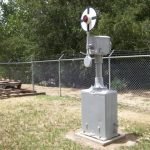
43. Railroad wigwag signal, Magnetic sign company, used on the Atchinson, Topeka, & Santa Fe Railroad.
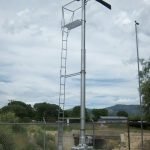
44. Train signal semaphore tower (a type of signal system) used on the Atchinson, Topeka, & Santa Fe Railroad.
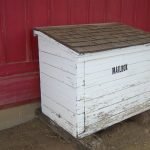
45. (In front of depot) - lockable wooden holding box for US Mail, used to transfer mail between the Postmaster from the general store to and from the railroad carrier.
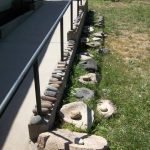
46. (Behind depot and adjacent to Section House ramp) - collection of American Indian matates (large flat grinding stones, and manos (small stones) used for grinding grain and grass seeds.
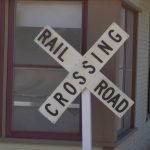
47. (In front of Section House) - railroad crossing sign.
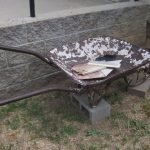
48. (Behind Section House ramp) - hand-made metal wheelbarrow with metal wheel.
